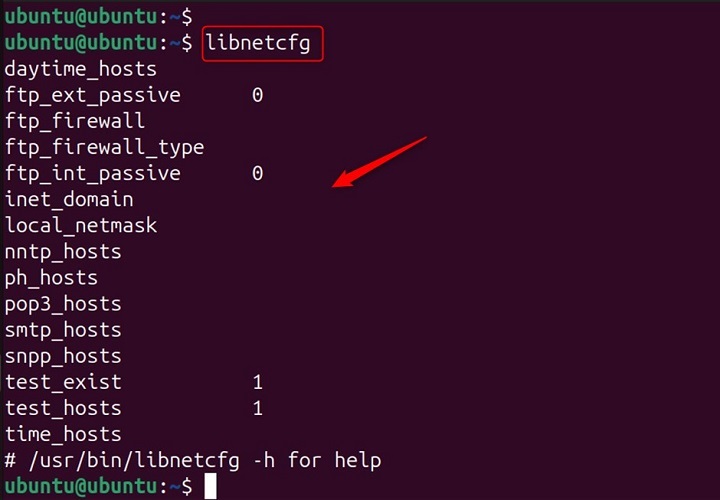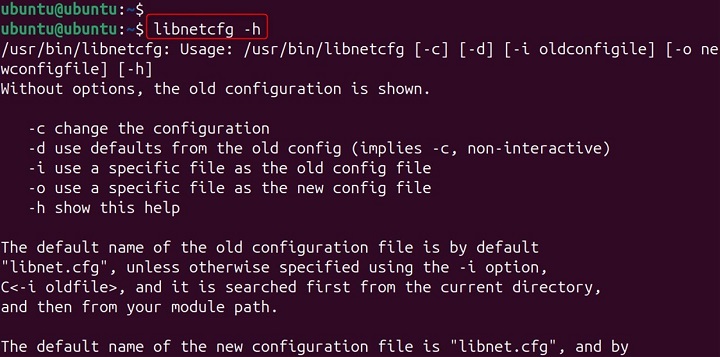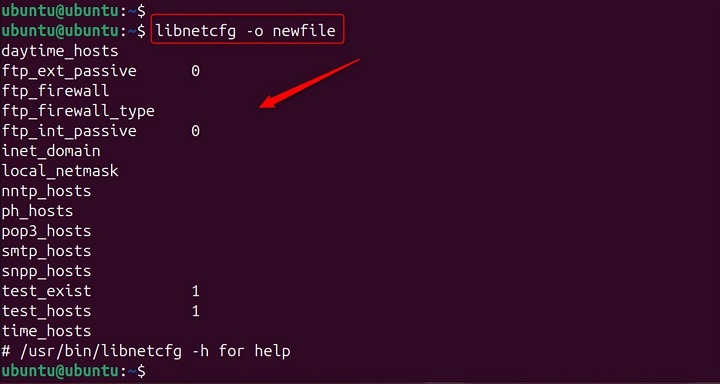
libnetcfg Command in Linux
Libnetcfg is a command-line tool that allows you to manage network filters and firewall rules in Linux systems. It provides a user-friendly interface for creating, modifying, and deleting filters, making it easier for system administrators and network engineers to configure network security.
Linux, the powerhouse of operating systems, offers a plethora of commands for network configuration and management. Among these is the libnetcfg command, a versatile tool that aids in the configuration of network settings. This command is part of a larger suite of tools that allow users to manage complex network configurations with ease.
Table of Contents
Here is a comprehensive guide to the options available with the libnetcfg command −
- Understanding libnetcfg Command
- How to Use libnetcfg Command in Linux?
- Examples of libnetcfg Command in Linux
Understanding libnetcfg Command
The libnetcfg command is designed to be user-friendly, providing a straightforward approach to managing network interfaces, settings, and profiles. It encapsulates various functionalities that are essential for both novice and experienced Linux users.
The libnetcfg command is a utility in Linux that serves a specialized purpose it is used to configure the libnet library. This library is a crucial component for network programming in Perl, providing a consistent interface for creating and manipulating network packets. libnetcfg is particularly useful because it allows users to configure libnet without having to edit configuration files manually.
How to Use libnetcfg Command in Linux?
libnetcfg is part of the standard Perl distribution starting from Perl version 5.8. However, it can be used for any libnet installation, regardless of the Perl version. The command is executed without arguments to display the current configuration of libnet. This feature is beneficial for users who need to quickly check the existing settings before making changes.
Basic Usage of libnetcfg
The basic syntax of the libnetcfg command follows a simple pattern −
libnetcfg [options] [arguments]
Here, [options] represent the different switches or flags that modify the behavior of the command, and [arguments] are the parameters passed to the command to execute specific tasks.
Libnetcfg provides a powerful and flexible way to manage network filters in Linux systems. By understanding the basic commands and options, you can effectively configure your network security to meet your specific needs.
Basic Usage of libnetcfg
The basic usage of libnetcfg is straightforward. Running the command without any options will output the current configuration to the terminal −
libnetcfg

This command will display various configuration parameters such as daytime_hosts, ftp_int_passive, and smtp_hosts, among others. These parameters are essential for defining how libnet interacts with different network services.
Examples of libnetcfg Command in Linux
Listing Network Interfaces
To list all the available network interfaces on your system, you can use the following command −
libnetcfg list

This command displays a list of all active and inactive network interfaces, providing a clear overview of your system's network setup.
Activating a Network Interface
If you need to activate a specific network interface, libnetcfg simplifies the process −
libnetcfg --up eth0

Replace eth0 with the name of the interface you wish to activate. This command will bring the specified interface up, making it operational.
Deactivating a Network Interface
Similarly, to deactivate an interface, the command is just as intuitive −
libnetcfg --down eth0

Again, replace eth0 with the appropriate interface name. This will bring the interface down, effectively disabling it.
Configuring Network Profiles
libnetcfg also allows for the creation and management of network profiles, which can be extremely useful for managing different network configurations −
libnetcfg --profile work --set-ip 192.168.1.100/24 --gateway 192.168.1.1

This example creates a profile named work, sets a static IP address, and defines the default gateway.
Create a new filter
This command creates a filter that allows TCP traffic from the source IP address 192.168.1.100 to the destination IP address 10.0.0.1 on interface eth0 and forwards it to interface eth1.
libnetcfg add -i eth0 -o eth1 -p tcp -s 192.168.1.100 -d 10.0.0.1 -j accept

Delete an existing filter
This command deletes the filter with the ID 1234:
libnetcfg del 1234

Show information about a filter
This command displays detailed information about the filter with ID 1234, including its source and destination IP addresses, protocol, action, and interfaces.
libnetcfg show 1234

Modify an existing filter
This command changes the protocol of the filter with the ID 1234 from TCP to UDP.
libnetcfg edit 1234 -p udp

List all available filters
This command lists all existing filters, including their IDs, source and destination IP addresses, protocols, actions, and interfaces.
libnetcfg list

Advanced Features
The libnetcfg command is a testament to Linux's flexibility and power in network management. Its comprehensive set of features makes it an indispensable tool for IT professionals and enthusiasts alike. Whether you're setting up a home network or managing enterprise-level infrastructure, libnetcfg provides the functionality you need to succeed.
For advanced users, libnetcfg offers features that cater to more complex network configurations −
- VLAN tagging
- Bonding multiple interfaces
- Configuring advanced routing rules
Each of these features can be accessed through the libnetcfg command by using the appropriate options and arguments.
For users seeking help or needing to understand the available options, the -h option provides a usage message −
libnetcfg -h

To modify the configuration, one would use the -c (create) or -d (delete) options. The default configuration file is named libnet.cfg, and by default, it is searched for in the current directory and then in the module path. If there's a need to specify a different file, the -i option allows users to input an alternative file name −
libnetcfg -i oldfile

Similarly, to output the new configuration to a specific file, the -o option is used −
libnetcfg -o newfile

The libnetcfg command's ability to configure libnet makes it a powerful tool for network administrators and developers working with Perl. It simplifies the process of setting up network-related parameters, which can be quite complex and error-prone if done manually.
Conclusion
The libnetcfg command is a testament to the flexibility and power of Linux and Perl's network programming capabilities. By providing a simple yet effective way to manage libnet configurations, it enhances productivity and reduces the potential for configuration errors.